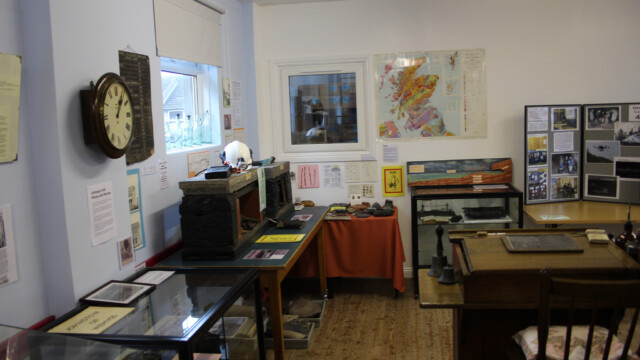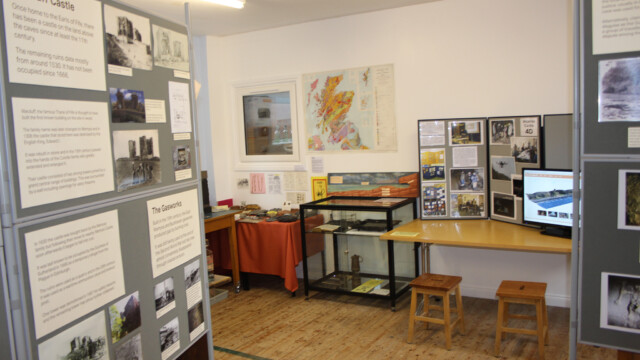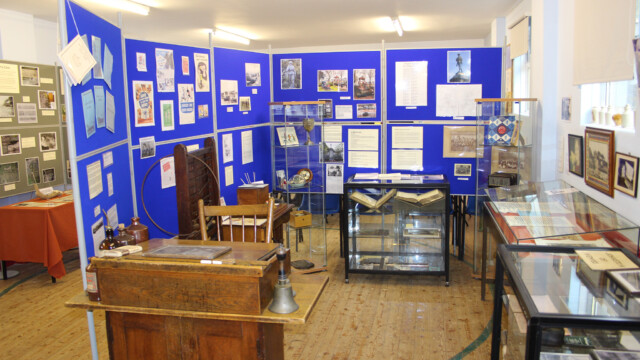Volunteers at the SWACS Museum were delighted recently to welcome pupils from East Wemyss Primary School’s P6 – P6/7 groups along with their teacher, Mrs Ellicott, and two teaching assistants as part of a nationwide schools local heritage project.
The children were split into two groups, each given time to look round the museum to consider what we have on display and which particular items they found most interesting or intriguing and in need of explanation. SWACS volunteers, Pam Cranston and Mirri Kroll, were on hand to take questions regarding the wide variety of historical domestic, educational and industrial artefacts, geological specimens and many images and information relating to the area and to the Wemyss Caves and their unique carvings. The response from the children was extremely rewarding. Not only were they interested in everything they saw but were also very keen to engage with exhibits, some of which they had never seen before but which are representative of their local and national heritage.
More than one child described the whole experience as ‘mind blowing’ and several said that they had ‘learned so much’.
It was great to see how this small but unique local history museum proved useful in enabling the children to the explore the diverse history of the area. It was an absolute pleasure to host them. Even so, it came as a complete surprise to receive not one but seventeen beautifully constructed, handwritten ‘thank you’ letters for opening up the museum to them and for volunteering to assist with the project, listen to and respond to their many questions.
The enthusiastic response to the exhibits justifies the time and effort SWACS invest in ensuring that the museum collections are housed within the community and play a vital role in highlighting local heritage. It was also very interesting to read which of the many items on display sparked the children’s imaginations and curiosity. Here are a few examples:
- An Edwardian Teachers High Chair, designed to ensure that teachers had a clear view over the entire class!
- Old school Abacus – a distinctly low tech calculating device.
- Old school bells. Used to summon children in or gain their attention.
- A flat iron. A pre-electric smoothing iron heated by a fire or on the stovetop.
- A shoe last. Used to hold shoes in place whilst being repaired at home.
- A sewing machine. Used to make clothes at home during wartime restrictions.
- Coal mining models showing pit-props, miners’ lamps and other equipment, photographs and information about child labour.
- Artefacts and photographs from Johnston’s Linen Mill. Mirri’s firsthand knowledge of how looms work came in very handy!
- A regatta trophy. Remnant of local miners’ boat-building and racing days.
- A model ship in a bottle. How it got in there proved fascinating.
- A photograph of Sir Jimmy Shand. Local ex-miner turned world renowned musician.
- A musket ball. Well done the girl who recognised it instantly.
- Photographs and information about the Picts and the Pictish and other carvings in the Wemyss Caves.
- Geological specimens. Crystals, coal and shale especially popular. Although fossil fuels are a definite no-no.
- A stone painted with a Pictish symbol (the work of one of our volunteers).
- A clay money box. Pre-runner of the theatrical ‘Box Office’.
And so much much more! We’re hoping to do much more with the museum and will be opening up again in April. We look forward to welcoming visitors back then. School and other special visits can be arranged in advance.




